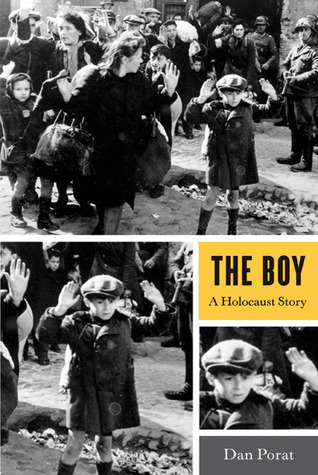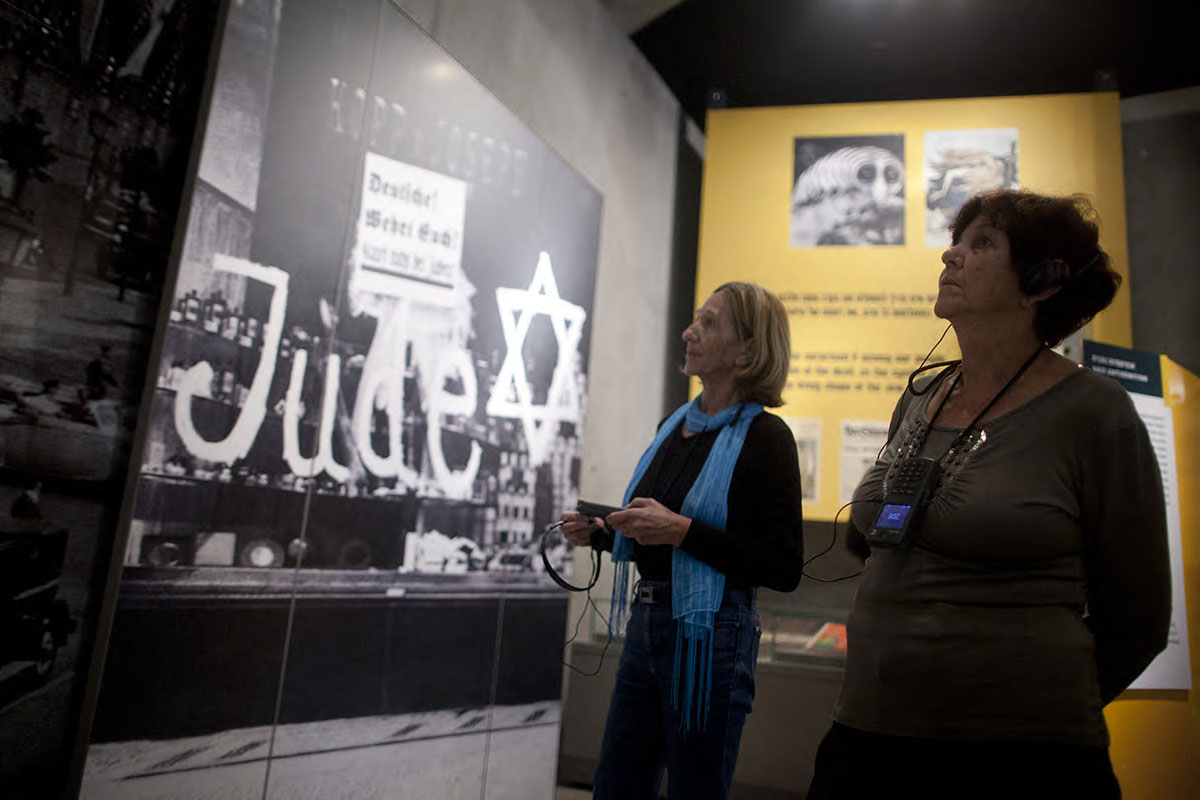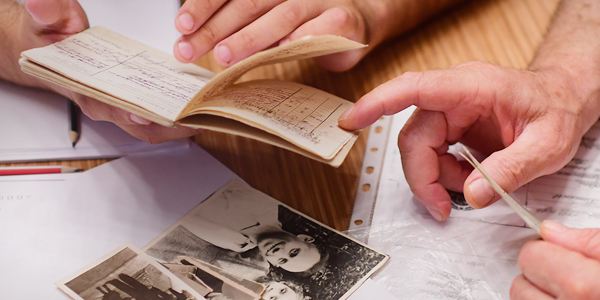
The Boy - A Holocaust Story
- A few people, including Tsvi Nussbaum, claim to be the boy in the picture, but the claims are inconclusive.
Sunday to Thursday: 09:00-17:00
Fridays and Holiday eves: 09:00-14:00
Yad Vashem is closed on Saturdays and all Jewish Holidays.
Entrance to the Holocaust History Museum is not permitted for children under the age of 10. Babies in strollers or carriers will not be permitted to enter.

The Boy - A Holocaust Story
The Boy
Dan Porat
Hill and Wang, 2010
246 pages
We may never know the identity of the iconic photograph of a young terrified boy, hands raised above his head, surrounded by soldiers during the final destruction of the Warsaw Ghetto in April 1943.
However, through the use of 60 photographs, Dan Porat unravels the history behind the destruction of the ghetto, and identifies the Nazi soldier, Josef Blosche, who pointed his gun at the boy and those around him. He also focuses on two other Nazis, Franz Konrad, who took photographs in the ghetto, possibly including that of the boy, and Jurgen Stroop, assigned to liquidate the ghetto. Two Jews – a young boy, Zvi Nussbaum1, and a teenage girl, Rivka, are also featured as Porat weaves their story around the events of the time.
The book begins with a pre-Holocaust background of these people, and follows through to the period of the Holocaust and after. By individualizing and personalizing the victims, the author is following the Yad Vashem educational philosophy of bringing a face to the victims, instead of focusing on the six million as an anonymous, collective mass.
How could armed Nazis murder unarmed men, women, and children? Dan Porat weaves his research and investigation around the photographs and tries to answer this question.
Porat (Holocaust Studies/Hebrew Univ. of Jerusalem) writes that “it is the responsibility of a historian to narrate photographs with analytic rigor, even while retaining, and indeed deepening, their immediacy and meaning.”
An ideal book for use in the classroom, “The Boy” teaches students through photographs about the tragedy of the Holocaust and in particular of the Warsaw Ghetto. Students can choose from any of the 60 photographs and, as Porat has done, research the history behind them. Alternatively the teacher can use photographs in classroom discussion.
Criminals Stroop, Konrad and Blosche were executed after the Holocaust. Rivka survived the Holocaust, married and settled in Israel, but sadly lost a son in the Yom Kippur War.
We must not of course forget that Stroop’s dream of wiping out the Warsaw Ghetto within a few days was not realized, due to the unbelievable bravery of those who resisted.

Thank you for registering to receive information from Yad Vashem.
You will receive periodic updates regarding recent events, publications and new initiatives.

"The work of Yad Vashem is critical and necessary to remind the world of the consequences of hate"
Paul Daly
#GivingTuesday
Donate to Educate Against Hate


Worldwide antisemitism is on the rise.
At Yad Vashem, we strive to make the world a better place by combating antisemitism through teacher training, international lectures and workshops and online courses.
We need you to partner with us in this vital mission to #EducateAgainstHate
The good news:
The Yad Vashem website had recently undergone a major upgrade!
The less good news:
The page you are looking for has apparently been moved.
We are therefore redirecting you to what we hope will be a useful landing page.
For any questions/clarifications/problems, please contact: webmaster@yadvashem.org.il
Press the X button to continue



